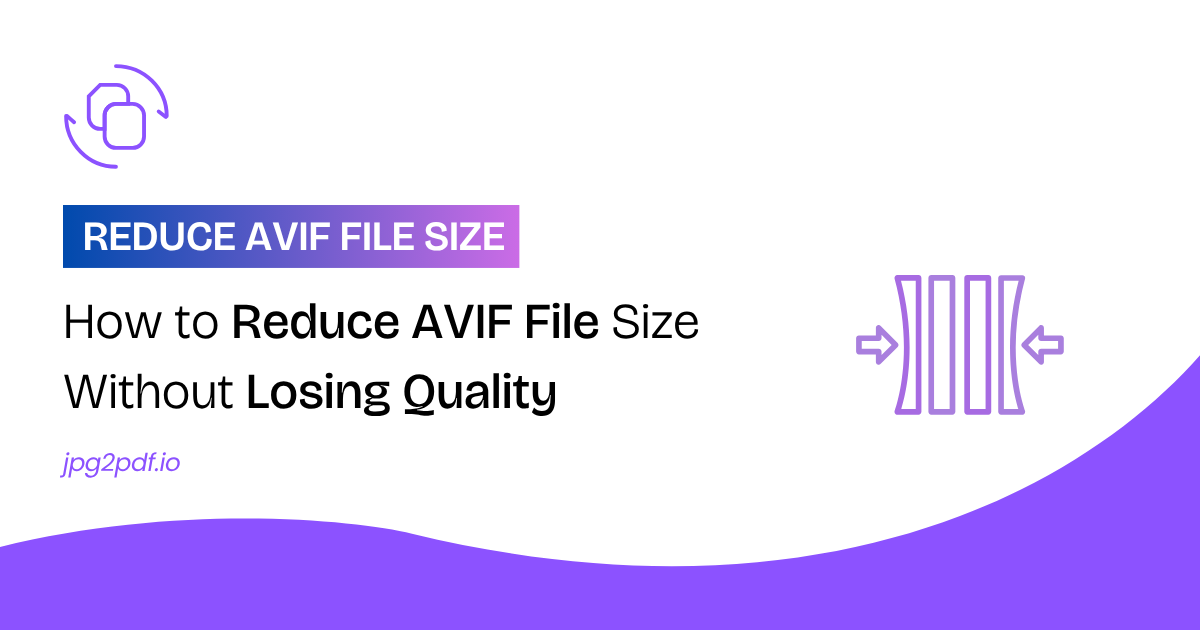
How to Reduce AVIF File Size Without Loss in Quality
Huge AVIF files can make uploads take longer, take up unnecessary space, and generally waste time. You can have high-quality pictures, but their size can make sharing or publishing them impossible. When you work online, every second matters, and large pictures can really mess with your pace. Learning how to reduce size of image files helps solve this issue effectively.
The good news is that there are effective methods to reduce file size while maintaining quality. You can achieve your desired balance with the right tools and compression settings. With these steps, you can reduce image file size without losing quality and get faster file performance, reduced file sizes, and incredible image quality all in one.
What Is an AVIF File
AVIF stands for AV1 Image File Format. The AVIF file format is a modern image format that captures high-quality images in a smaller file than preexisting formats. It is capable of advanced compression and works with high-quality deep colored images.
AVIF files are smaller than JPEG and PNG files, which is why many photographers and web designers prefer them. The challenges with AVIF file compression are that when it is not optimized, it can result in larger files. Understanding how do I convert image formats without losing quality will help fix that easily. You can also convert AVIF to JPG to make your images more widely compatible while keeping quality intact.
Why Reduce File Size?
Performance and storage impact how a file performs. Websites and apps struggle with large files. These files lengthen load and transfer times, slow down the user experience, and use unnecessary bandwidth.
Save space on your device and cloud storage with smaller files. Files that load and display faster enhance website SEO. Using methods to make image smaller without losing quality helps you save time and maintain visual integrity.
Efficient compression prevents system resource waste and speeds up work. You save sharp images visually, exactly how you want them, and every byte you save counts. Using techniques to reduce file size of images ensures better results with minimal effort.
How To Reduce AVIF File Size Without Losing Quality
You can follow a few simple steps to cut down the file size while still keeping the quality.
Resize Image Dimensions
Overly large images mean large file sizes. You can cut down the width and height to display and still keep visible clarity. Even a smaller resolution looks perfect on standard screens.
Choose the right size for the platform. Different websites use larger dimensions for banners than thumbnails. Proper resizing helps reduce picture file size without losing quality and keeps your image light and crisp.
Adjust Compression Settings
All converters and editors of AVIF files have options about quality and compression levels. Compression can lead to detail loss, so a balanced compression level is essential. Averaging your compression levels gives the best clarity to compact ratio.
Finding the ideal level takes time and testing, but it is worth the effort. There is usually a compression ratio that is visually lossless, which allows you to reduce image file size without losing quality effectively.
Remove Unused Metadata
Extraneous data within a file adds weight without benefit. Metadata includes timestamps, camera settings, and color profiles. Removing metadata does not affect visual content and immediately reduces file size.
If editing or storage is not required, stripping metadata is wise. It will make the file smaller, easier to access, and faster to load.
Tool Selection
Using AVIF compression tools online is convenient because they require no software and provide fast results. They apply compression techniques that preserve texture and tone. Upload your file, select settings, and download the optimized version. These tools help you make image smaller without losing quality efficiently.
Some tools offer batch options for processing multiple files efficiently. Learning how to reduce size of image across multiple files saves time and ensures consistent results.
Practical Uses of Reduced File Size Images
Reducing the AVIF image size helps in areas where speed and quality matter.
Websites and Blogs – Smaller images load faster and improve user experience. They conserve bandwidth and boost SEO.
Mobile Applications – Reduced images lower download size and display faster on slower networks.
Photography Portfolios – High clarity is preserved while saving storage space for hundreds of photos.
Emails and Newsletters – Compressed images open faster and meet size limits.
Cloud Storage and Backups – Organizing compressed images saves storage space and backup costs.
Conclusion
Reducing the size of AVIF files without sacrificing quality improves efficiency and performance. You get smaller files of high detail and bright colors, resulting in faster uploads, better webpages, and smoother sharing.
By using resizing, adjusting compression, removing metadata, and selecting smart tools, you can reduce image file size without losing quality and achieve professional results. Each optimized image demonstrates technical skill and attention to detail, improving workflow and digital results.
Related Blog: AVIF File Type Explained: How to Easily Convert AVIF to JPEG Online
FAQs
What causes large AVIF file sizes?
High resolution and uncompressed data are the leading causes of bulky files. You can reduce it by adjusting the image size and compression.
What tool can I use to compress AVIF images?
An online AVIF image compressor will do just fine. Make sure which offers quality control and batch options for an improved workflow.
Is AVIF better than JPEG in compression?
Absolutely. AVIF encodes images and compresses them into smaller files compared to JPEG's limited range while still offering quality in color.
Will display quality be affected if I reduce dimensions?
Not if you resize according to the display requirements. Proper scaling maintains image sharpness and clarity.
Is it possible to convert other formats into AVIF for smaller files?
Sure. Replacing PNG and JPEG images with the AVIF format will reduce size while keeping quality to within the same range.